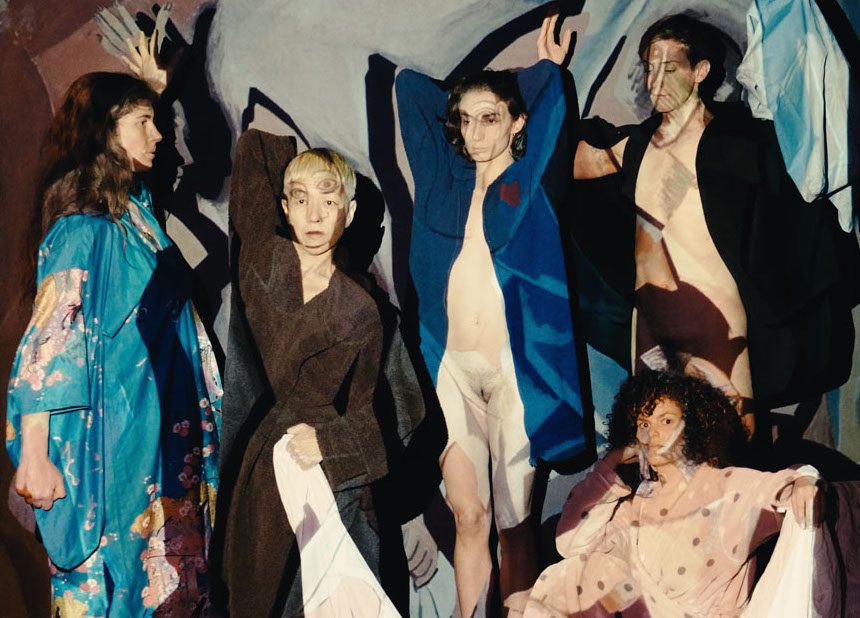The Contemporary Austin, Texas, United States
14 Sep 2019 - 19 Jan 2020

Theo Eshetu, "Adieu Les Demoiselles" Filmstill (detail), 2019. Commissioned by The Contemporary Austin. Artwork © Theo Eshetu. Image courtesy the artist and Axis Gallery, New York.
The Sorcerer’s Burden: Contemporary Art and the Anthropological Turn explores the complicated relationship between art and anthropology as examined in the work of contemporary artists.
Focusing on artists who appropriate, manipulate, and transform elements found in anthropological methodologies and practices to create contemporary works that are alternately subversive, humorous, satirical, dark, playful and enchanting, The Sorcerer’s Burden considers the complex results that emerge when contemporary artists, curators, and exhibitions turn to anthropology.
The artists—working in painting, sculpture, photography, film, video, and performance—explore the intersection between fact and fiction and the questionable proposal that any field, media, or genre might propose to convey the “truth.” Spanning The Contemporary Austin’s two locations—the Jones Center in downtown Austin and the fourteen-acre Betty and Edward Marcus Sculpture Park at Laguna Gloria—the exhibition includes works by eleven contemporary artists, including Ed Atkins, Nuotama Bodomo, Theo Eshetu, Cameron Jamie, Kapwani Kiwanga, Marie Lorenz, Nathan Mabry, Ruben Ochoa, Dario Robleto, Shimabuku, Julia Wachtel.
With a title inspired by an anthropological “ethno-fiction” novel by the American cultural anthropologist Paul Stoller, The Sorcerer’s Burden highlights artists’ contemporary engagement with anthropology in experimental, subversive, and poetic ways, exploring challenging issues around culture, identity, appropriation, race, colonialism, immigration, and politics present in the overlapping fields. Consisting of new commissions, existing works, and site-specific iterations, The Sorcerer’s Burden is divided into four themes across the two museum sites: Things and Ritual, Magic, Myth.
Things features works that focus on material culture and appropriation, as highlighted by a selection of terra-cotta and minimalist sculptures by Nathan Mabry and a room of appropriation-pastiche paintings by Julia Wachtel. Ritual, Magic, and Myth consists of works that explore history and culture through the lens of storytelling, ritual, and fantasy, including an installation by Kapwani Kiwanga of free-standing, illuminated sculptures, an example from her Flowers for Africa series, and a suite of ephemeral lithographic prints, along with a newly-commissioned sound and video work by Dario Robleto around historic recordings of heartbeats and brainwaves.
The second theme highlights The Archaeology of Culture, with works that “mine” culture through people, architecture, and the fragmentation of modernism. Here, an animated video work by Ed Atkins features a pastiche of figuration and abstraction, narrated by a melancholy CGI avatar; Nuotama Bodomo is featured through two, part-historical, part-imaginary short films rooted in African history and folklore; a room of two-and-three dimensional works by Ruben Ochoa includes ficus tree photographs, new rust paintings, and steel sculptural forms; and Theo Eshetu premieres a new film commissioned by The Contemporary Austin: a moving filmic “painting” referencing the lineage of European modernist painting including Picasso’s Les Demoiselles d’Avignon.
The section Farther Afield presents projects revolving around fieldwork, community, and performance. These include a new commission by Marie Lorenz in which ceramic vessels and steel forms based on ancient lobster and octopus traps are situated at an old boat dock on the grounds. Lorenz’s installation will also include a series of performative boat rides on Lake Austin. Also on view in Farther Afield are a newly-commissioned, colorful bronze sculpture by Cameron Jamie; a concrete, stacked totemic sculpture by Ruben Ochoa; and Shimabuku’s Snow Monkeys of Texas, consisting of a video projection, a photograph, and live cactuses installed in the Driscoll Villa. Together, these works aim to engage a timely chapter in the longstanding discourse around the intersection of art and anthropology.